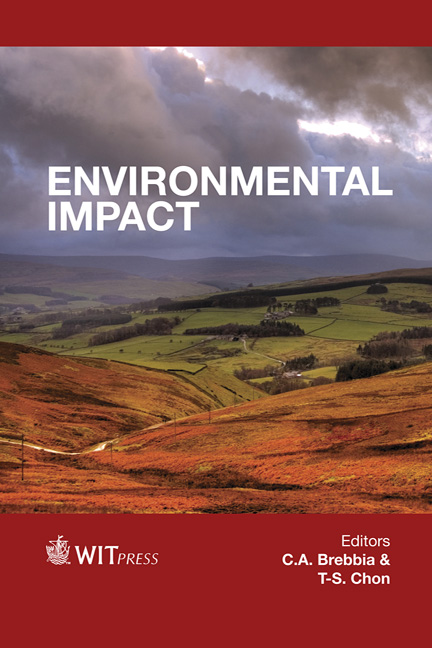Characterising Movement Patterns Of Medaka (Oryzias Latipes) In Response To Copper Analysed By Using A Self-organising Map
Price
Free (open access)
Transaction
Volume
162
Pages
10
Page Range
137 - 146
Published
2012
Size
3,361 kb
Paper DOI
10.2495/EID120131
Copyright
WIT Press
Author(s)
C.-W. Ji & Y.-S. Park
Abstract
The automatic detection of animal movement behaviours in response to disturbances is considered an efficient tool for the bio-monitoring of ecosystems. Behaviours, however, can be difficult to analyse, due to complexity of the data. In this study, we characterised the movement patterns of medaka (Oryzias latipes) in response to low concentrations (1 mg/L) of copper ion (Cu2+) using a self-organising map (SOM) with movement parameters. Test specimens were observed individually in an aquarium (40 cm × 20 cm × 10 cm), and their position was detected from the side at 0.25-sec intervals using a television camera. Movement parameters such as speed, angle, and distance were calculated for 3 different segment lengths, with 3, 6, and 12 points indicating the duration of observation of 0.5 sec, 1.25 sec, and 2.75 sec, respectively. The effects of copper treatment on movement patterns of medaka were evaluated with different segment lengths, and the discrimination efficiency was compared. Our results showed that the movement activity after Cu2+ treatment decreased, and changes in movement tracks caused by Cu2+ treatment were identified with segmentation using SOM. These computational approaches could be used for in situ bio-monitoring and early warning systems. Keywords: movement pattern, response behaviour, copper, chemical treatment, medaka, early warning system, on-line monitoring, segment size.
Keywords
movement pattern, response behaviour, copper, chemical treatment, medaka, early warning system, on-line monitoring, segment size.





